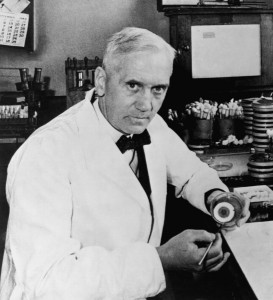.
Vector Art and XML
The images above are actually one in the same, just expressed in two very different ways! Vector graphics use geometrical primitives such as points, lines, curves, and polygon(s), which are based on mathematical expressions, to represent images in computer graphics. Being expressed this way allows for scalability and no loss in resolution. Click on the Mondrian-like image above you will be shown an "svg" image (a type of vector file format), if you save that image, open it in a browser and 'view the source' of the page you will see the underlying xml description of that image. This is just a simple example, but vector images can become quite complex. A great free and open source program to make you own vector art is Inkscape.
This too is one in the same. Music is amplitude of frequencies over time. The graph to the left shows the duration (x-axis), frequency (y axis), and amplitude (right edge). The score describes the same (notes are the frequency, note heads are the duration, and the amplitude is usually described with dynamic markers). The score was created using MuseScore. From there a sound file was extracted and processed through Spek – Acoustic Spectrum Analyser.
The Piece is also an example of steganography, the practice of concealing information within another message or medium. For this example the melody uses Morse Code to encode words . If you're curious to hear it click below and/or view the full score to figure out the message ;)
.
Crochet and Geometry
Best viewed in Chrome/Chromium or just click on the link below the video.
.
The crochet objects were created in the spirit of the Hyperbolic Crochet Coral Reef project
started by Margaret Wertheim. They are an exploration of hyperbolic geometry physically realized. No general formal exists for these objects, and only relatively recently was it discovered that they can be physically modeled.
"The Hyperbolic Crochet Coral Reef is a celebration of the intersection of geometry and handicraft and a testimony to the disappearing wonders of the marine world. Launched as a response to the devastation of living reefs from global warming and ocean acidification, the Crochet Reef resides equally in the realms of art, science, mathematics and environmentalism."
.
Poetry and Hidden Messages

A poem found in Lewis Carroll's Through the Looking-Glass. The poem is an acrostic poem which spells out the name of the Alice Pleasance Liddell whom Carroll based the Alice in Alice in Wonderland.

This is the same poem encrypted using the ElGamal cipher using my public gpg key (click on the image above to zoom)
.
The poem is an example of steganography since it tries to obscure that there is even a message at all, while the latter uses encryption which involves a cipher or mathematical algorithm to keep the information hidden and requires a key to decipher the text. Both techniques are studied in the field of cryptography.
.
Portraits: The Various Sides of a Person

Dr. Alexander Fleming Working in Lab, 1943 (Discovered Penicillin)

Lewis Carroll (author of Alice in Wonderland)
Alexander Fleming: Bio Artist
Well before his discovery of penicillin, Alexander Fleming was a member of the Chelsea Arts Club. Less well known is that he also painted with living organisms. (Corbis)

"He produced these paintings by growing microbes with different natural pigments in the places where he wanted different colors. He would fill a petri dish with agar, a gelatin-like substance, and then use a wire lab tool called a loop to inoculate sections of the plate with different species. The paintings were technically very difficult to make. Fleming had to find microbes with different pigments and then time his inoculations such that the different species all matured at the same time. These works existed only as long as it took one species to grow into the others. When that happened, the lines between, say, a hat and a face were blurred; so too were the lines between art and science." via Smithsonian Magazine
Lewis Carroll: Mathematician

"While he is known today primarily as an author, Lewis Carroll, or rather Charles Dodgson, was also a scholar. He taught math and logic to undergraduates at Christ Church, Oxford, for many years, at the same time he was creating fanciful stories to entertain children. He carved a unique place for himself in his field when he combined his two areas of expertise, writing entertaining scenarios for challenging math and logic problems, or turning the concepts into games, to make the learning easier, more enjoyable, and more lasting. While he did not produce any revelatory findings,[...] his creative, user-friendly approach to learning remains fresh today. [...]" via LewisCarroll.org
More information about math and his literary works can also be found here and here
.
Games: A combination of Various Arts and Science

Minetest a Minecraft-like Game












